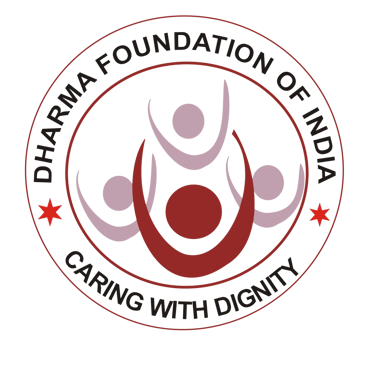We are a certified with 12A, 80G, and CSR-1 approvals—Kindly Support Us with your Generous Donation.
Health Literacy Programe
A Health Literacy Programme is an educational initiative designed to improve individuals' knowledge, skills, and confidence in managing their health and navigating the healthcare system. These programs aim to enhance people's understanding of medical terms, diagnoses, prescriptions, and healthcare instructions, empowering them to make informed decisions about their health and wellness.
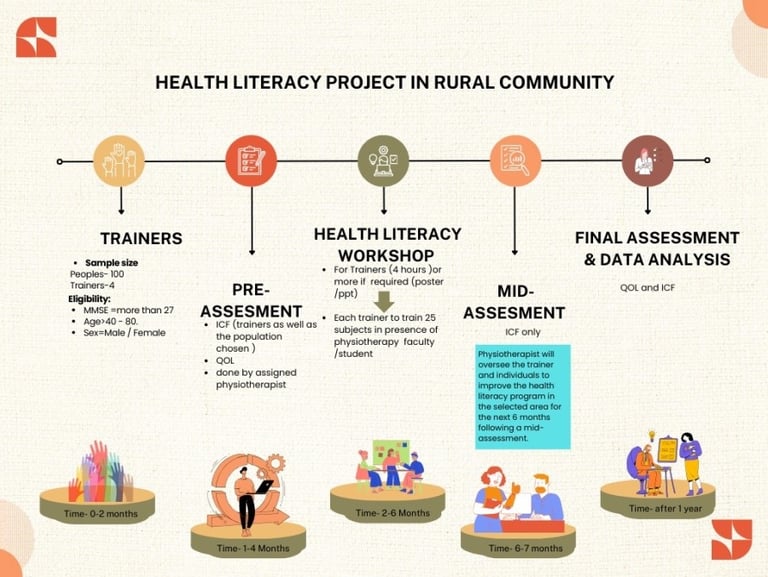

Key Components of a Health Literacy Programme:
1. Educational Workshops: These are designed to teach basic health concepts, such as nutrition, exercise, mental health, disease prevention, and chronic illness management.
2. Health Communication Skills: Focus on improving the ability to read, understand, and act on health information provided by doctors, nurses, and other healthcare professionals. It includes interpreting labels on medication, understanding health insurance documents, and more.
3. Cultural Competency: Many health literacy programs also incorporate strategies to bridge language and cultural gaps that may hinder effective communication between patients and healthcare providers.
4. Access to Resources: Participants are guided on how to access credible health information, both online and offline, and how to utilize healthcare services appropriately.
5. Practical Exercises: Programs often include interactive activities, like role-playing, case studies, and hands-on demonstrations on things like reading a prescription bottle or navigating health apps.
6. Targeted Support for Vulnerable Populations: Special attention is given to populations with lower health literacy, including the elderly, immigrants, low-income communities, and people with chronic diseases or disabilities.
Benefits of a Health Literacy Programme:
Improved Patient Outcomes: People with better health literacy are more likely to adhere to treatment plans, understand how to prevent diseases, and have better health outcomes overall.
Reduction in Healthcare Costs: By improving health literacy, individuals can avoid unnecessary hospitalizations, mismanagement of medications, and overuse of emergency services.
Empowered Decision-Making: Individuals gain confidence in their ability to engage in shared decision-making with their healthcare providers, which leads to better health choices.
Health Equity: These programs help reduce disparities in healthcare access and outcomes by empowering all segments of society with the knowledge they need to take control of their health.
Integrating Health Literacy with ICF
Health literacy can be aligned with the ICF framework to help individuals understand, manage, and navigate their health and functioning better. This integration can guide healthcare professionals in designing tailored interventions that enhance both health knowledge and functional capacity.
Key Areas of Integration:
1. Education on Body Functions and Structures:
Provide patients with easy-to-understand information about their health conditions and body functions. Use the ICF framework to explain how impairments may affect daily functioning and quality of life, emphasizing the importance of health management.
2. Activity and Participation:
Educate individuals on self-care, exercise, and rehabilitation strategies to promote physical activity and participation in social and community life. ICF Highlight how improved functioning through better health literacy can enhance participation in daily activities, work, and social interactions.
3. Environmental and Personal Factors:
Teach individuals how to navigate healthcare systems, including understanding healthcare policies, insurance, and accessing services. ICF Address environmental factors (such as accessibility of healthcare facilities) and personal factors (such as attitudes and beliefs) that influence health outcomes.
4. Tailored Communication:
Simplify medical and health-related information to match the literacy levels of individuals, especially those with disabilities. Incorporate the ICF’s focus on individualized care plans, ensuring that communication considers the functional limitations and personal circumstances of each individual.
5. Chronic Disease Management and Disability:
Equip individuals with knowledge about managing chronic diseases and long-term disabilities. ICF Link the management of chronic conditions to better overall functioning, providing individuals with tools to improve their daily lives.
Benefits of Integrating Health Literacy with ICF
Holistic Care: Emphasizes a comprehensive view of health, including physical, mental, and social well-being.
Empowerment: Enables individuals to manage their health and make informed decisions.
Inclusive Healthcare: Encourages consideration of personal and environmental factors in treatment, particularly for those with disabilities.
Improved Outcomes: Enhances individuals' ability to manage conditions, leading to better health and quality of life.
Reduction in Healthcare Disparities: Provides tools for individuals with disabilities or low health literacy to improve their health and societal participation.
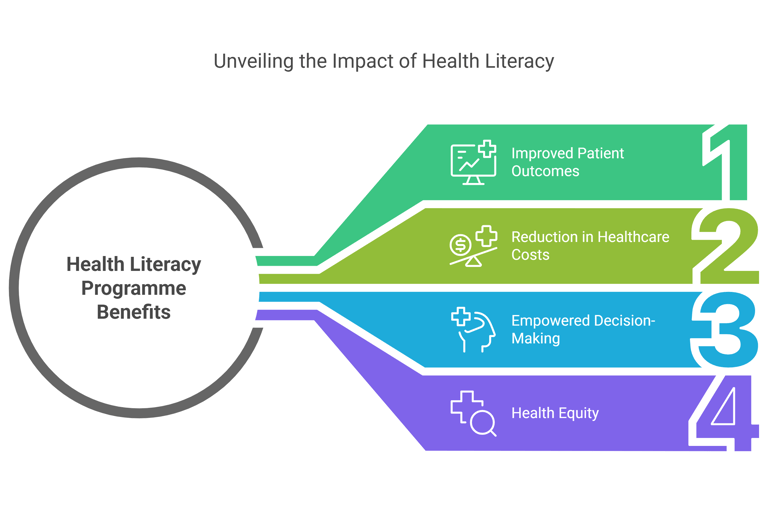

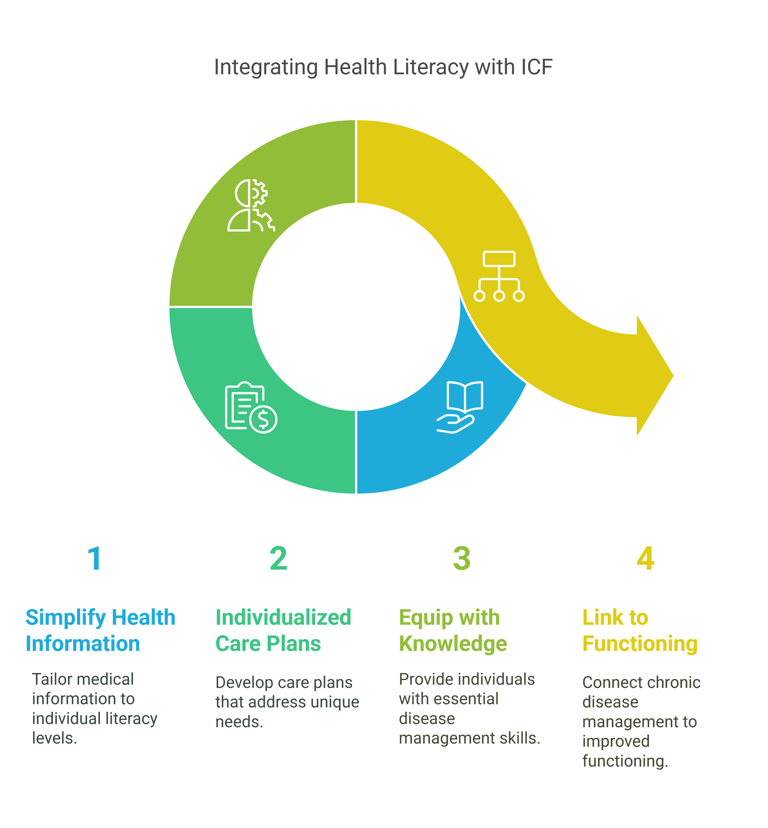

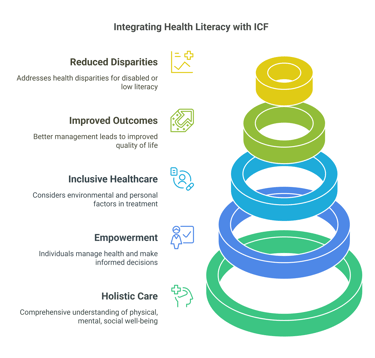

Steps for Implementing a Health Literacy Program with ICF
1. Assessment: Use the ICF to assess individuals' functioning in different domains (body, activity, participation, environment) and identify their health literacy needs.
2. Tailored Education: Develop educational materials that are easy to understand and address the specific functional and environmental factors affecting the individual.
3. Interdisciplinary Collaboration: Work with healthcare providers, educators, and social workers to ensure a coordinated approach to health education that aligns with ICF principles.
4. Supportive Environments: Advocate for policy changes and create environments that support individuals in applying what they learn through health literacy programs, whether it’s improving accessibility or providing better health services.
5. Monitoring and Evaluation: Continuously evaluate the program’s impact on both health literacy and functioning using ICF-based outcome measures.
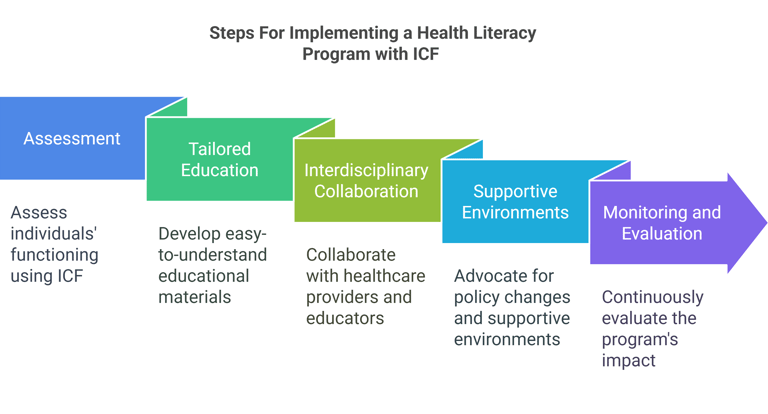

Empowerment
Promoting health literacy and informed choices.
Contact Us
dharma.dfi@gmail.com
+91-8240646603
© 2025. All rights reserved.
